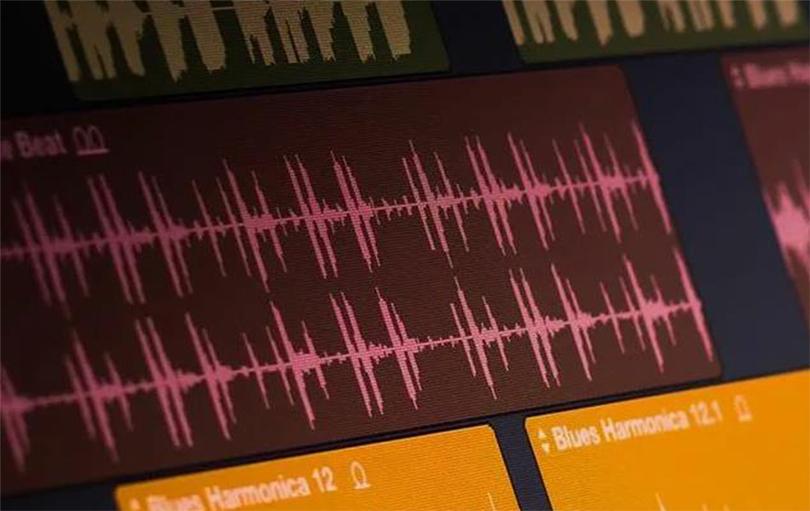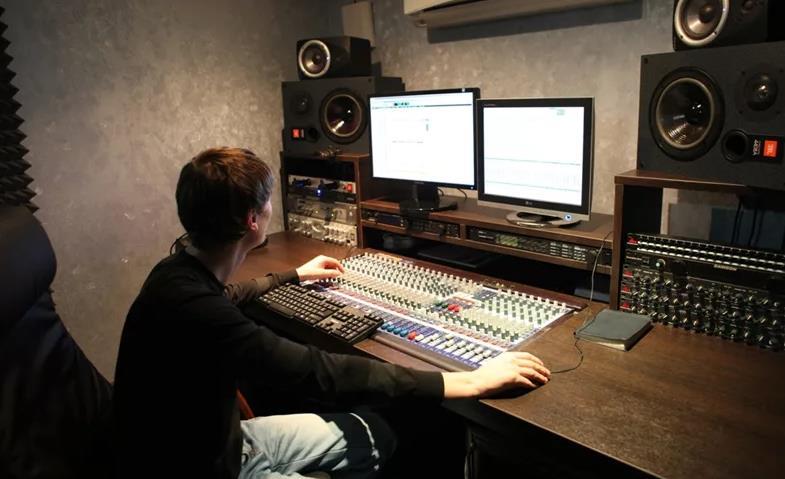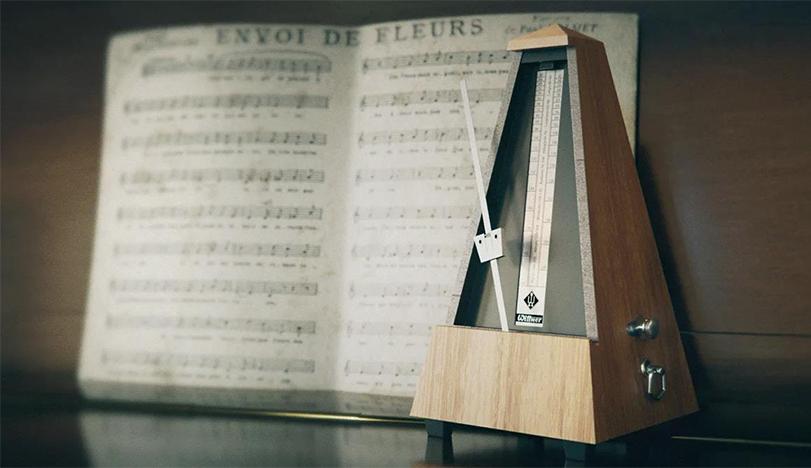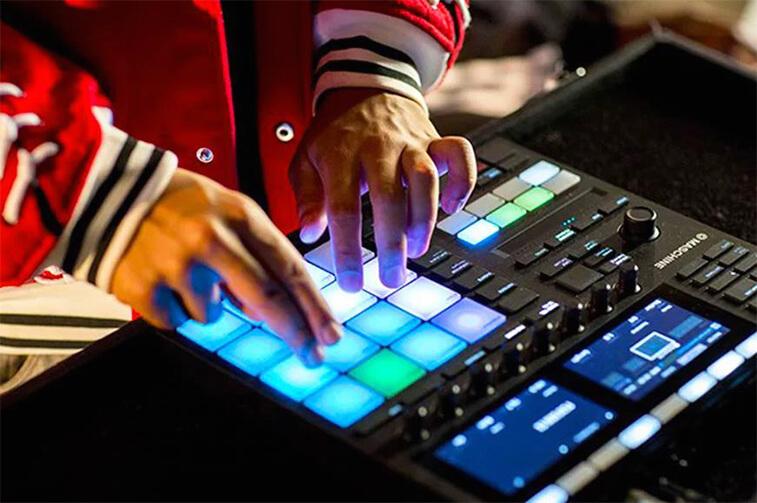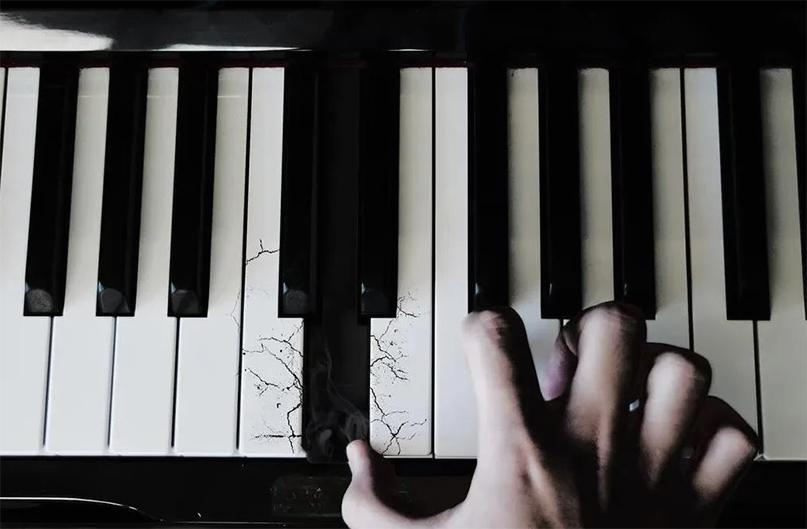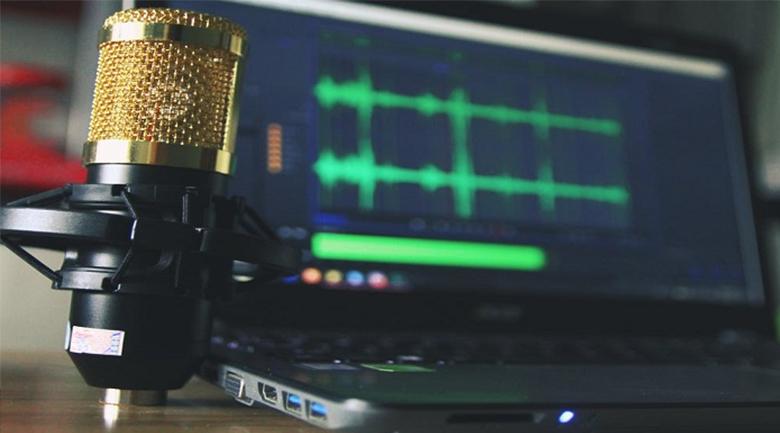What is staff in music

Typically, pieces of music are recorded using a system of five horizontal lines known as a staff or stave. This system can be seen in the image below.

At the beginning of the staff there is usually a musical clef, which plays an important role in determining the pitch of the sounds written on and between the lines. There are two main types of keys:
- Treble;
- Bass.
This image shows a treble clef, which indicates the positions of the notes on the staff. This key establishes correspondence between lines, spaces and musical notes.
The bass clef, on the contrary, has its own symbolism and rules for placing notes on the staff.
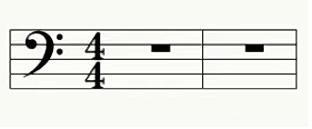
The bass clef is used to record the notes of low-register musical instruments, while the treble clef is used to record the notes of high-register instruments. In the previous lesson on notes, we mentioned middle C (or C), located in the center of the piano’s range.
The treble clef is suitable for instruments whose range is above this middle “C”, and the bass clef is suitable for instruments whose range is below this middle “C”. Both clefs are used in the piano system, which consists of two staves connected by a brace called an accolade.
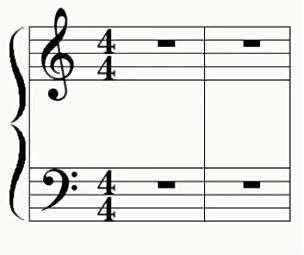
Typically, the piano uses both notation systems due to its wide sound range. Using a single key limits the music recording capabilities of this instrument. An accolade is used to combine two keys, which is known as the piano system.
However, when notating notes for instruments of a certain register, only the treble clef is used for the high registers and only the bass clef for the low registers.
Staff
As mentioned, the staff is used to write pieces of music in the form of five horizontal lines that form a staff. This type of notation reflects two key aspects of music: time and pitch.
The time aspect is interpreted horizontally and can be indicated using notes and rests. For example, a thick line on a stave indicates a rest.

Thus, time in music is interpreted from left to right and is determined by the number of beats in a measure, which is displayed on the staff. The pitch of notes, on the other hand, is determined vertically: high notes are written higher on the lines and spaces, while low notes are written lower.
To understand the temporal aspect of music, notes are read from left to right, and the pitch component is read from bottom to top. Notes can be placed on lines, in spaces between them, or even outside the staff on additional lines.
The image below shows the middle note C, also known as C first octave, on a stave.
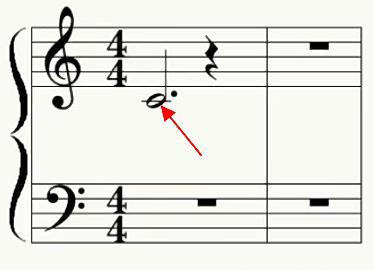
An additional line is located between two standard note lines and serves to expand the range of the staff. It allows you to record notes outside the main range.
Another example of using an extension line is to use it to extend the range of the staff upward, allowing you to write higher notes.

Extension lines can increase the range both up and down, and can be used in both keys.
White key notes
Let’s look at how the notes of the white keys of a piano are written on a stave.
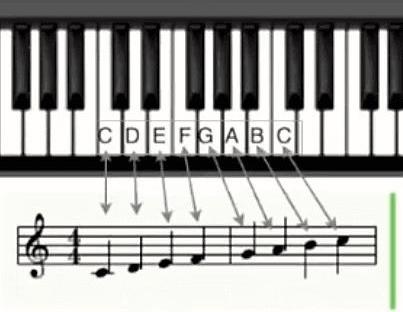
The image shows that the first notes begin with the first additional line, where the middle “C” (the “C” note of the first octave) is located. Notes without sharps or flats are called natural notes.
So, after the natural “C” comes the natural “D”, or “D” according to the Western system of note notation. Then comes the note “E” or “E”, followed by “F” or “F”. These notes sequentially fill the lines and spaces, like steps.
After “F” come “G” (G), “A” (A), “B” (B), and then “Do” (C) again.
Notes of black keys
Now let’s look at the staff with notes and sharps.

You can see in the image that “Pre Natural” comes first. Then “C sharp” (C#) is written on the same line, but with a sharp symbol (#) before the note. A sharp raises the note by a semitone.
Next comes “D sharp” (D#), also indicated by a # symbol on the same line as “D”. After this come “E natural” (E), “F sharp” (F#), “G sharp” (G#), “A sharp” (A#) and so on.
All of these notes with sharps correspond to the black keys of the piano.
You may have noticed that different note notation systems are used to understand the correspondence between the syllabic and letter systems.
Now let’s look at flats (♭).
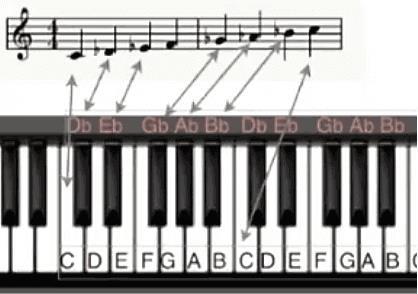
Let’s start with “Up to the first octave”. Next comes “D flat” (D♭), which represents the black key on the piano formerly called “C sharp” (C#). A sign that looks like the letter “♭” indicates a flat.
This is followed by “E flat” (E♭) and “F natural” since it does not have a flat (the black key on the piano). Then come “G flat” (G♭) and “A flat” (A♭). They are followed by a B flat (B♭) and a C note in the next octave.
Notes with flats are written this way.
Staff and bass clef
Now let’s see what the notes look like on a stave in the bass clef.

The image shows the notes corresponding to the white keys, similar to the treble clef structure. However, here the notes start on a different line, as this is determined by the bass clef. The principle of sequential filling of lines and spaces remains unchanged. We see the notes starting with C natural, then D natural, E natural, F natural, and so on.
Sharps and flats on the staff
Now let’s look at what sharps and flats look like on a staff. Here is the photo below.

Let’s start with C (C), followed by C sharp (C#), followed by D sharp (D#) and E natural (E). Next come “F sharp” (F#), “G sharp” (G#), “A sharp” (A#), “B natural” (B), and again “C” (C). All of these notes are sharps in the bass clef.
Now let’s pay attention to the flats in the bass stave. Let’s start with the note “C” (C♭), followed by “D flat” (D♭), indicated by the symbol ♭. This is followed by “E flat” (E♭), “G flat” (G♭) and “A flat” (A♭). Next comes B flat (B♭), and finally the first octave C (C) on the additional line.
How to learn notes on a stave
Now I will tell you a method that will help you remember the location of the notes on the staff. You may be wondering how to determine where each note is?
There is an English proverb that will help you with this. We’ll learn it now. Knowing where the notes are located on the staff is very important because without this skill it is impossible to read and write music.
For treble clef
Let’s start with the treble clef. Let’s look at the notes located on the lines.

There is a saying for remembering notes on lines. The capital letters in this saying indicate the names of the notes: E (mi), G (sol), B (si), D (re), F (fa). Just remember this! It is important to know the placement of notes on the lines and spaces in both the treble clef and bass clef.
Now let’s move on to memorizing the notes located in the spaces of the treble clef. Everything is simpler here, since the English word “FACE” (face) is used, where each letter represents a note: F (fa), A (la), C (do), E (mi).

- F;
- A;
- C;
- E.


